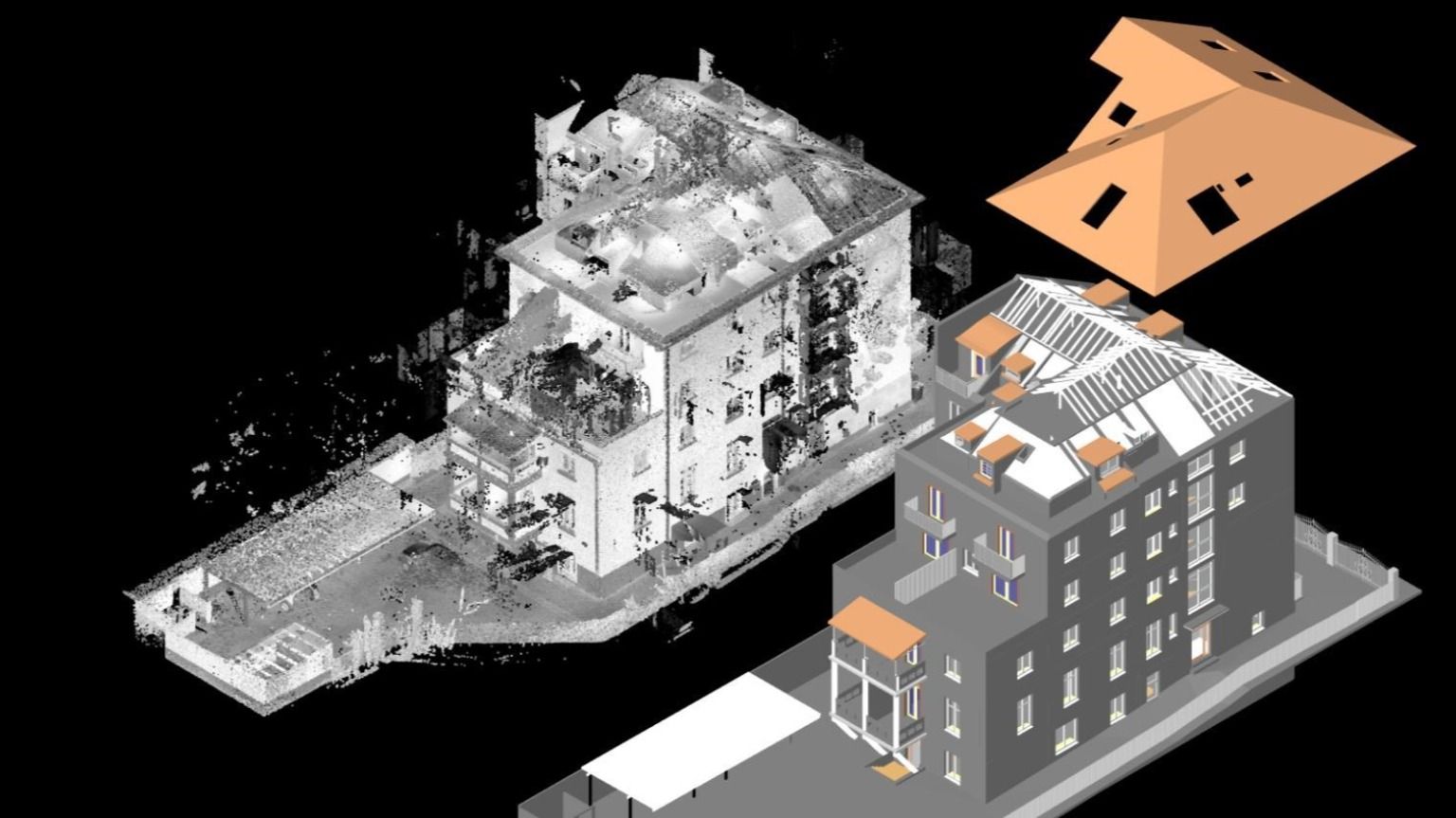In the rapidly evolving landscape of architecture and engineering, the integration of cutting-edge technology has become indispensable. One such revolutionary advancement is the (Building Information Modeling) process. Architects and engineers today are leveraging 3D scanning technology to create accurate and detailed digital representations of physical structures. This blog post explores the best practices associated with Scan to BIM Modeling, providing valuable insights for professionals aiming to optimize their workflow and enhance project outcomes.
Understanding Scan to BIM
Scan to BIM is a transformative process that involves the utilization of 3D laser scanning devices to capture precise measurements and data points of existing buildings or structures. This data is then converted into a digital BIM model, enabling architects and engineers to analyze, modify, and optimize the structure with a high level of accuracy.
Choosing the Right 3D Scanner
Selecting an appropriate 3D scanner is the first crucial step in the Scan to BIM process. Architects and engineers must consider factors such as scanning range, accuracy, and speed. High-precision laser scanners are ideal for capturing intricate details, while long-range scanners are essential for larger structures. Evaluating the compatibility of the scanner with BIM software is equally important to ensure seamless data integration.
Conducting a Comprehensive Site Survey
Before commencing the scanning process, conducting a thorough site survey is essential. Architects and engineers should collaborate closely to identify the key areas of focus. This collaboration ensures that the scanning process captures all necessary elements, facilitating the creation of a comprehensive BIM model. Site surveys also help in planning the positioning of scanners to optimize data collection.
Data Processing and Clean-Up
Once the scanning is complete, the raw data collected needs to be processed and cleaned up. This step involves removing noise, aligning scans, and merging data sets to create a coherent point cloud. Advanced software tools are employed to streamline this process, ensuring that the resulting data is accurate and ready for BIM modeling. Proper data processing lays the foundation for a high-quality BIM model.
Creating an Intelligent BIM Model
With the cleaned data in hand, architects and engineers can begin the process of creating the BIM model. This step involves assigning intelligent parametric objects to the scanned elements, such as walls, windows, doors, and structural components. The accuracy of the BIM model relies on meticulous attention to detail during this phase. Utilizing BIM software features, professionals can enhance the model by adding metadata, enabling data-rich visualization and analysis.
Collaboration and Iterative Refinement
Collaboration between architects and engineers is paramount throughout the Scan to BIM process. Regular communication ensures that the BIM model aligns with the project requirements and design intent. Iterative refinement is a common practice, allowing professionals to make necessary adjustments based on feedback and project developments. This collaborative and iterative approach enhances the accuracy and relevance of the BIM model.
Benefits of Scan to BIM for Architects and Engineers
The Scan to BIM (Building Information Modeling) process offers a multitude of benefits to architects and engineers. By harnessing the power of 3D scanning technology and integrating it seamlessly with BIM, professionals can transform the way they approach projects. Here are some key advantages:
1. Accuracy and Precision
One of the primary benefits of Scan to BIM is its ability to capture accurate and precise measurements of existing structures. Traditional methods of manual measurement are often prone to human error, but 3D scanning technology eliminates this risk. The resulting BIM model reflects the real-world conditions with a high degree of accuracy, reducing the chances of design and construction errors.
2. Time Efficiency
Scan to BIM significantly accelerates the data acquisition process. Compared to manual measurements and surveys, which can be time-consuming and labor-intensive, 3D scanning can capture a vast amount of data quickly. This efficiency translates to faster project initiation and reduced project timelines.
3. Cost Savings
Time efficiency also translates into cost savings. By reducing the time spent on data collection and modeling, architects and engineers can allocate resources more effectively. Additionally, the enhanced accuracy of Scan to BIM minimizes the risk of costly design revisions and construction errors, ultimately leading to budget savings.
4. Improved Collaboration
Collaboration between architects and engineers is streamlined through Scan to BIM. Both professions can work on a shared digital platform, ensuring that design and engineering considerations are integrated seamlessly. This collaborative approach fosters better communication, reduces conflicts, and results in more cohesive and efficient project outcomes.
5. Enhanced Visualization
The 3D BIM modeling generated through Scan to BIM offers enhanced visualization capabilities. Architects and engineers can explore the structure from various angles, making it easier to understand the existing conditions and plan modifications or renovations. This level of detail aids in design decision-making and client communication.
6. Risk Reduction
Scan to BIM helps mitigate risks associated with renovation or retrofitting projects. The accurate representation of existing conditions allows professionals to identify potential clashes or conflicts early in the design phase, reducing the likelihood of costly on-site modifications during construction.
7. Sustainability and Efficiency
Architects and engineers can use Scan to BIM to optimize energy efficiency and sustainability efforts. By accurately modeling the existing building, professionals can identify areas where improvements can be made to reduce energy consumption and environmental impact.
8. Regulatory Compliance
BIM models generated through Scan to BIM can assist architects and engineers in ensuring compliance with local building codes and regulations. The detailed data and precise measurements help professionals meet the necessary standards, reducing the risk of legal complications during construction.
9. Historical Preservation
For projects involving historical or heritage structures, this is invaluable. It allows for the preservation of architectural heritage by creating digital records of existing structures, aiding in restoration efforts, and ensuring that historical elements are accurately represented in new designs.
10. Long-Term Asset Management
That provides architects and engineers with an asset management tool. BIM models can be used for ongoing maintenance, renovations, and facility management, ensuring that buildings remain efficient and functional throughout their lifecycle.
Conclusion
Incorporating Scan to BIM best practices into architectural and engineering workflows empowers professionals to streamline projects, minimize errors, and enhance overall efficiency. By Varminect have high-quality 3D scanning technology, conducting comprehensive site surveys, focusing on meticulous data processing, creating intelligent BIM models, and fostering collaborative relationships. Embracing these best practices not only ensures project success but also positions professionals at the forefront of the industry, ready to tackle the challenges of tomorrow’s built environment.

